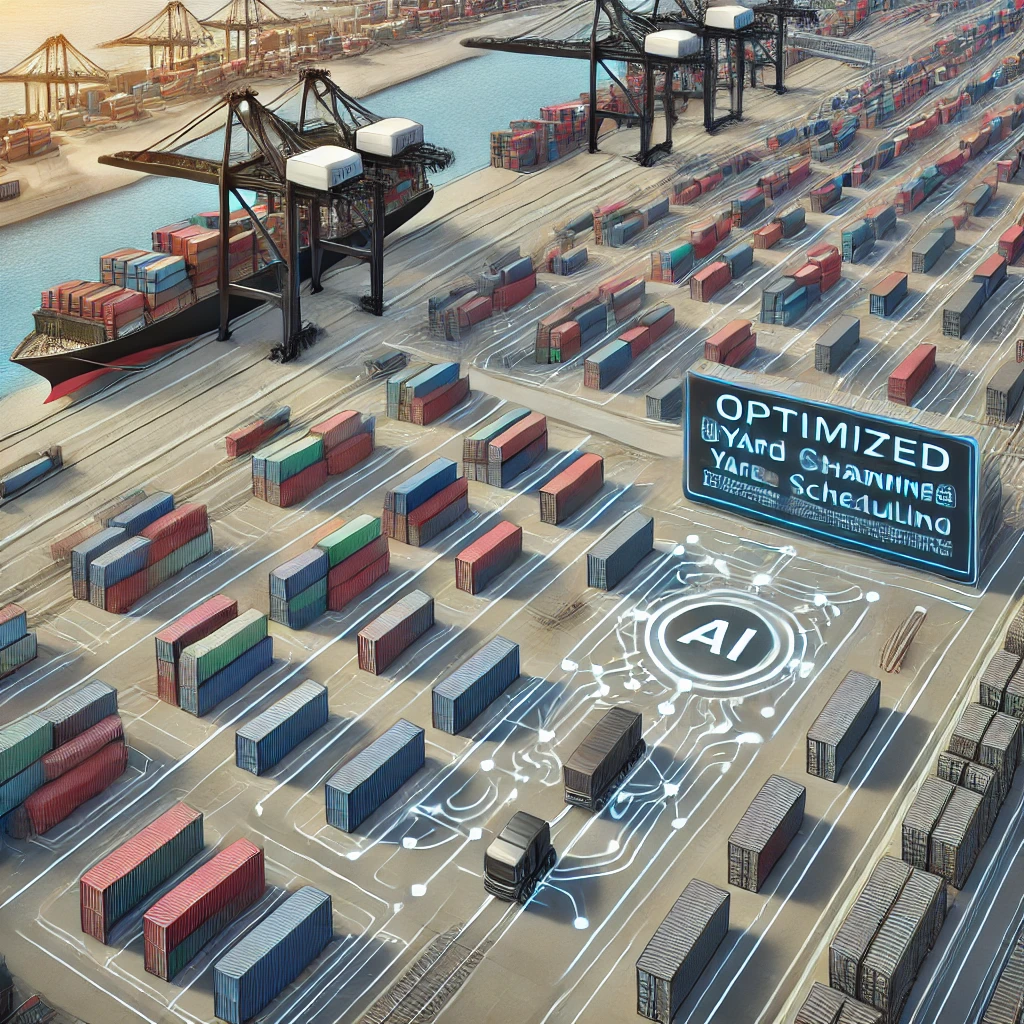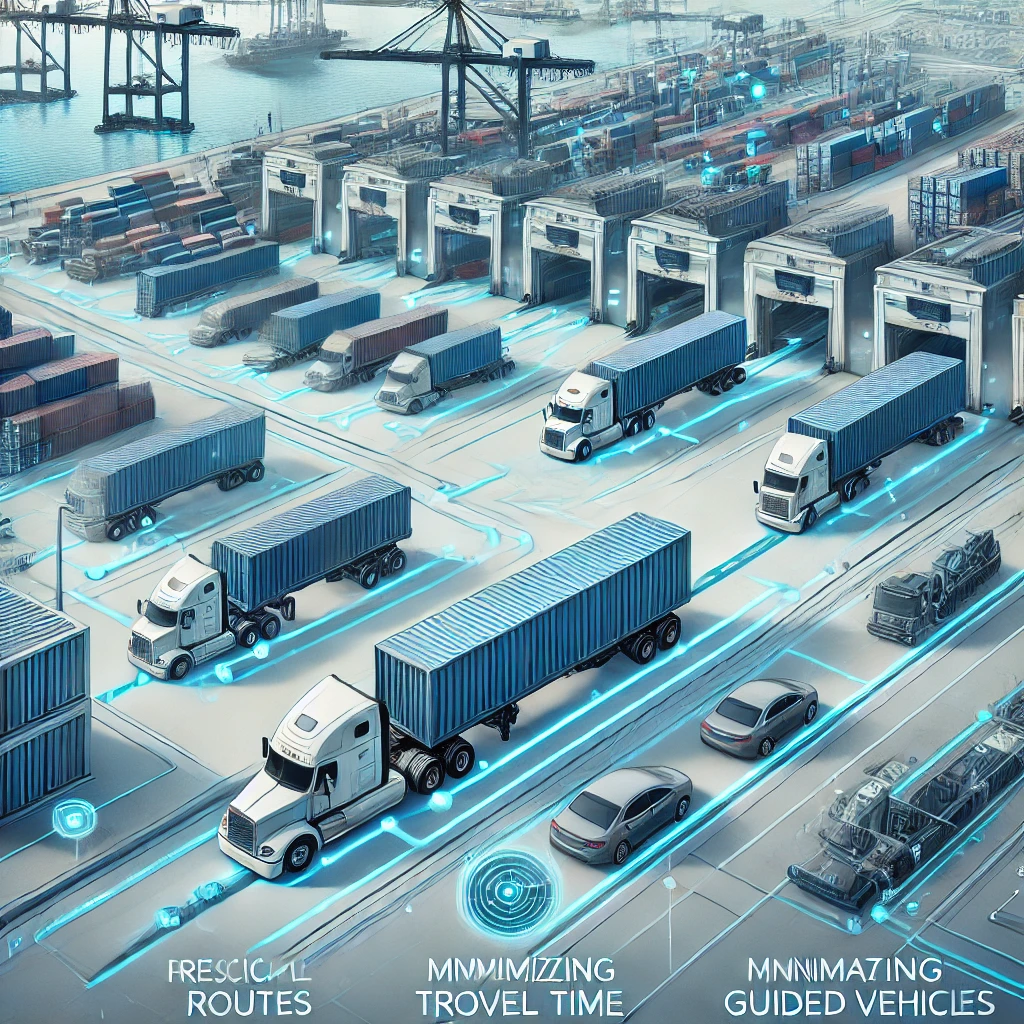Container terminals are the heartbeat of global trade, handling millions of containers annually. However, with increasing volumes and complexities, efficient operations at these terminals are critical. Operations research (OR) provides powerful tools to address these challenges, and when combined with AI-based prescriptive analytics, the results can be transformative. In this blog post, we’ll explore some of the key operations research problems faced by container terminals and how advanced solutions developed by Predictim Globe are revolutionizing terminal operations.
Berth Allocation Problem (BAP)
Problem Description:
The Berth Allocation Problem (BAP) involves assigning incoming ships to specific berthing positions at a terminal. The challenge is to minimize the total waiting time of ships and the handling time of containers, while considering various constraints like berth availability, ship size, and handling priorities. Traditionally, this has been a complex scheduling problem, often leading to suboptimal berth usage and increased turnaround times.
Solution by Predictim Globe:
Predictim Globe has developed an AI-based prescriptive analytics solution that optimizes berth allocation in real-time. By leveraging historical data and predictive models, the system anticipates ship arrival times, cargo volume, and terminal congestion. It then prescribes the most efficient berth assignment for each vessel, minimizing delays and maximizing berth utilization. The solution adapts dynamically to real-time changes, ensuring optimal operations even in the face of unexpected disruptions.

Yard Crane Scheduling Problem (YCSP)
Problem Description:
Yard cranes play a crucial role in loading and unloading containers at a terminal. The Yard Crane Scheduling Problem (YCSP) involves assigning cranes to containers in a way that minimizes the total operation time, reduces crane idle time, and avoids conflicts or delays in the yard. The complexity arises from the need to coordinate multiple cranes operating in a confined space, each with its own operational constraints.
Solution by Predictim Globe:
The AI-driven solution from Predictim Globe optimizes yard crane scheduling by considering real-time data on crane positions, container locations, and operational constraints. The system prescribes the most efficient movement sequences for cranes, minimizing travel distance and idle time. Additionally, it uses predictive analytics to forecast container demand, ensuring that cranes are always positioned where they are needed most.

Quay Crane Assignment Problem (QCAP)
Problem Description:
The Quay Crane Assignment Problem (QCAP) involves assigning cranes to ships at the quay, ensuring that containers are loaded and unloaded efficiently. The goal is to minimize the ship’s time at berth while maximizing crane productivity. Challenges include coordinating multiple cranes on the same ship, avoiding collisions, and ensuring that cranes are assigned to ships in a way that balances workload.
Solution by Predictim Globe:
Predictim Globe’s solution for QCAP uses advanced AI algorithms to assign quay cranes to ships in a way that maximizes efficiency. The system dynamically adjusts crane assignments based on real-time data, such as ship arrival times, container volume, and crane availability. It also uses machine learning to predict potential bottlenecks and prescribes adjustments to the crane schedule to avoid delays.

Container Stacking Problem (CSP)
Problem Description:
The Container Stacking Problem (CSP) focuses on determining the optimal way to stack containers in the yard to minimize retrieval time and reduce unnecessary reshuffling. The challenge lies in predicting the order in which containers will be needed while considering the constraints of the yard, such as space limitations and container types.
Solution by Predictim Globe:
Predictim Globe’s AI-based prescriptive analytics solution addresses CSP by analyzing historical and real-time data to predict future container movements. The system then prescribes an optimal stacking strategy that minimizes the need for rehandling and ensures quick access to containers when needed. By doing so, it significantly reduces operational costs and enhances the efficiency of the terminal.

Vehicle Routing Problem (VRP) within Terminals
Problem Description:
The Vehicle Routing Problem (VRP) at container terminals involves determining the optimal routes for internal vehicles (such as trucks and automated guided vehicles) to transport containers between different locations within the terminal. The objective is to minimize travel time and fuel consumption while ensuring timely delivery of containers.
Solution by Predictim Globe:
Predictim Globe’s VRP solution leverages AI and prescriptive analytics to optimize vehicle routing within the terminal. The system takes into account real-time traffic data, vehicle capacity, and container pickup and delivery schedules. By prescribing the most efficient routes for each vehicle, it reduces congestion, lowers operational costs, and improves overall terminal efficiency.

Conclusion
Container terminals are complex environments with numerous challenges that require sophisticated solutions. Operations research problems such as berth allocation, crane scheduling, container stacking, and vehicle routing are critical to the efficient functioning of these terminals. Predictim Globe’s AI-based prescriptive analytics solutions provide innovative and effective ways to address these challenges, ensuring that terminals operate at peak efficiency, reduce costs, and improve service levels.
As global trade continues to grow, the demand for smarter, more efficient terminal operations will only increase. By adopting advanced AI-driven solutions like those offered by Predictim Globe, container terminals can stay ahead of the curve and continue to meet the demands of the global supply chain.
Note: Illustrations provided in this post are conceptual and intended to enhance the understanding of the problems and solutions discussed.





